
https://youtu.be/DmqSYgM8QHc?si=kiWiej9n0FWNiNhw
Neuralink brain chip's first human patient. How does it work _ About That
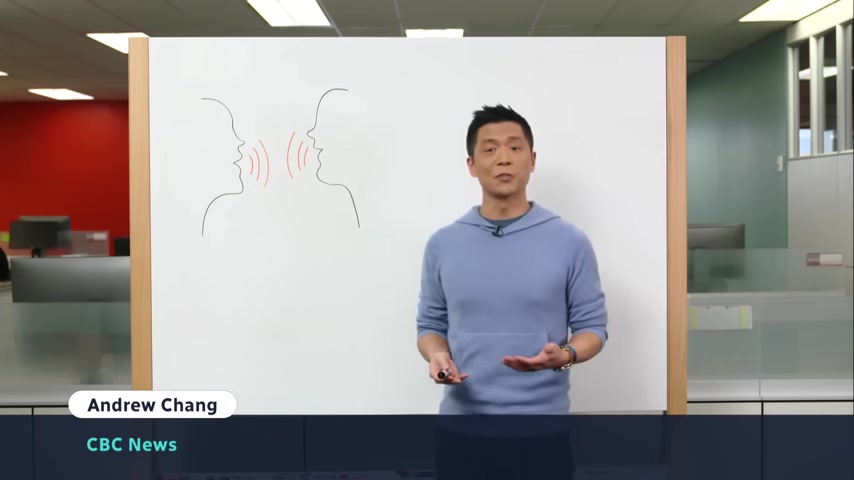
Imagine there's a party with two people .
It's a really quiet party .
They strike up a conversation trying to create a connection .
Now , how many connections can we have at this party ?
It's not your question .
Just one , right ?
One connection .
But let's say you have five people at the party who are all trying to find a match for themselves .
How many possible connections might there be ?
Now hold that thought when we talk about the human brain , we're really talking about neurons , just people at a party talking to each other .
But all of the combinations of ways they do , this is what gives us the ability to do and to think it's why we can run crawl , throw a football , remember a dance choreography , build helicopters , contemplate our own exist .
It's all just people at a party and Elon Musk with his neuralink start up .
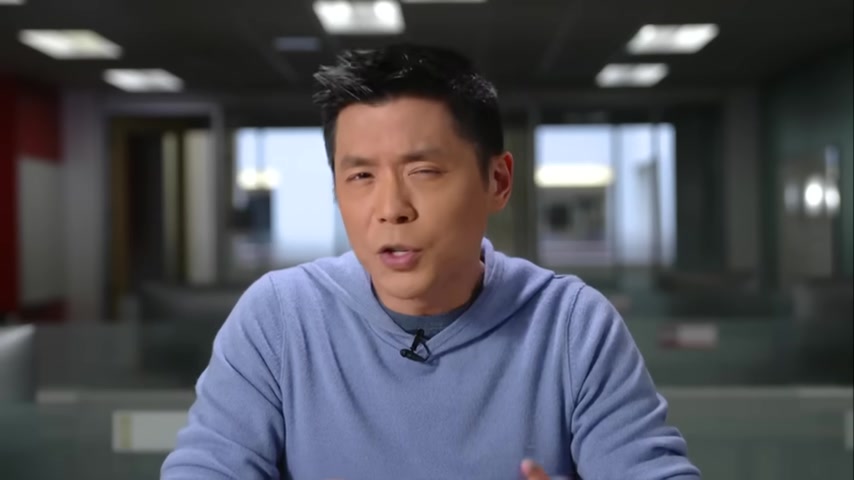
His goal is to control the party .
The overarching goal of neuralink is to create ultimately a whole brain interface .
Elon Musk recently posted on X the first human received an implant from Neuralink yesterday and is recovering well .
Now he's talking about ongoing FDA approved clinical trials in people by implanting a chip into the human brain .
Musk believes his technology can control the way neurons fire how they connect with other neurons .
And if he can do it accurately and on a large enough scale , he could do things like give blind people sight , give paralyzed people movement , give anybody the ability to control a computer with their mind , effectively merge man and machine .
Even in a benign A I scenario , we will be left behind with a high bandwidth brain machine interface .
I think we can actually go along for the ride .
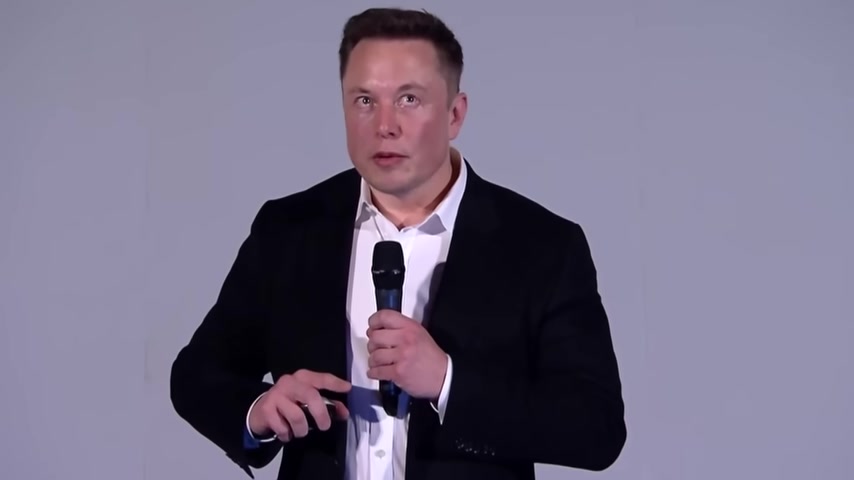
Um And we can effectively have the option of merging with A I .
So our first steps along these dimensions for our device is what we call the N one implant .
But back to the party , which I promise tells us something about the complexity of the N one implant .
So how many connections can we make between just five people or we can just count them right ?
Nine and 1010 connections .
So two people can make 15 people can make 10 , what about 12 people ?
Well , it can make a lot more than 12 connections .
That's for sure .
You can make 66 unique connections with just 12 people .
The human brain has 86 billion neurons give or take and each neuron can have thousands of distinct connections to other neurons altogether .

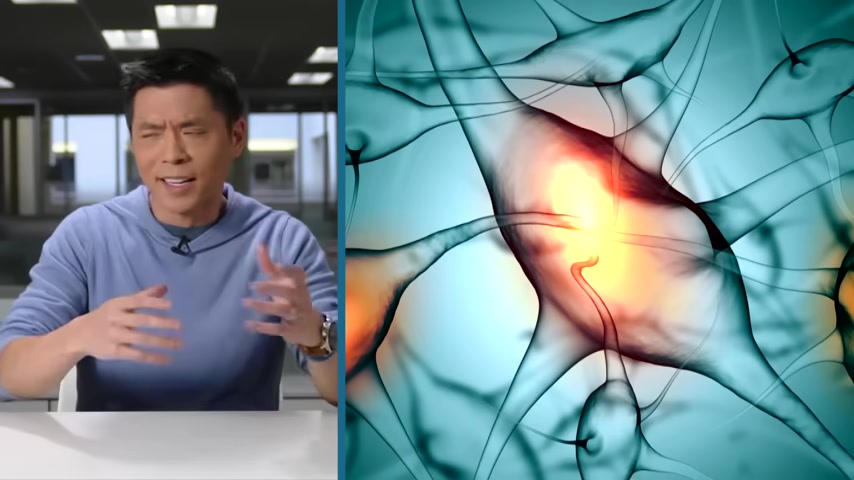
This adds up to trillions of synapses , these junctions between neurons where information is shared .
Our best estimate is that there's roughly 100 trillion Synaptics connections in the human brain .
I say all of this to make one thing very clear .
There's still a huge amount we don't know about how the brain works and a brain computer interface needs to address that problem .
So what do we know about the big news that neuralink has apparently successfully implanted its brain chip into its first human patient ?
One of the the things that Elon Musk said in this tweet that announced uh this advance was promising signs of neuron spike detection .
So what , what is a spike ?
Well , it's how neurons communicate with each other .
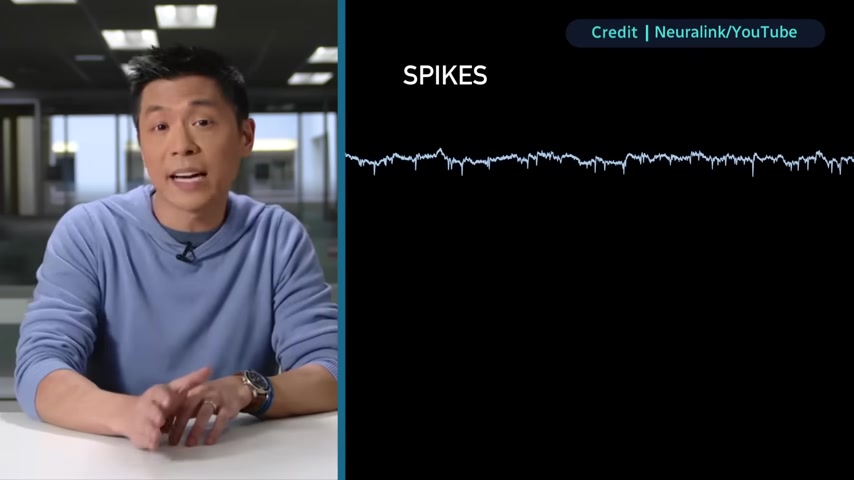
Ev everything that you perceive , feel , hear , think it's , it's all action potentials , it's all just it's neural spikes , measuring spikes is really important for neuralink and one implant because right now it kind of has just two main jobs record brain activity and then decode it spike detection is the first part understanding what that person's brain is doing .
This is pa he's a nine year old macaque who had a neuralink placed in each side of his brain about six weeks ago .
This video from neuralink explains what the company says it can do .
So you see that monkey's right hand controlling the joystick , that joystick moves the cursor on the screen .
So every time pager , the monkey moves it to the correct spot , banana smoothie comes shooting out of that metal straw .
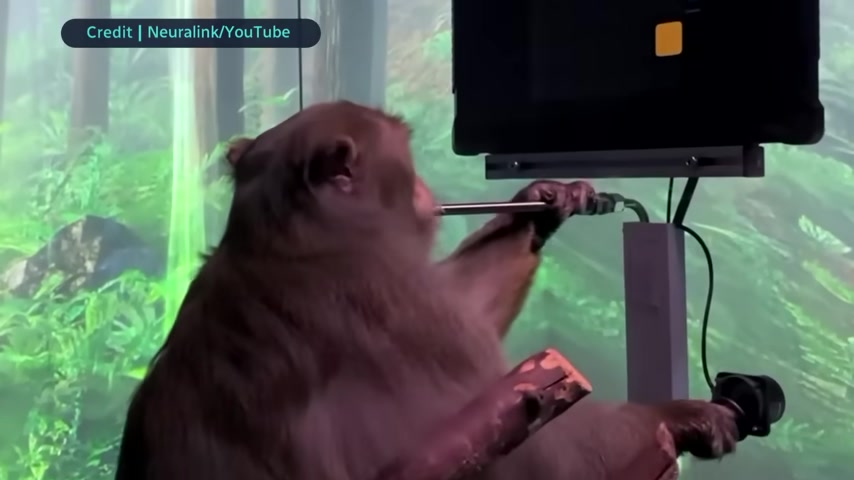
The brain implants are measuring how pager's neurons are firing as he's playing this game , we're wirelessly streaming in real time the firing rates from thousands of neurons to a computer that's spike detection , recording the brain activity right down to what individual neurons are doing and then learning how those patterns line up with the movement of the cursor .
After only a few minutes of calibration , we can use the output from the decoder to move the cursor instead of the joystick .
Paige is still moves the joystick out of habit .
But as you can see , it's unplugged , he's controlling the cursor entirely with decoded neural activity .
That's the second half of what the implant is supposed to do .
Understand the brain activity .

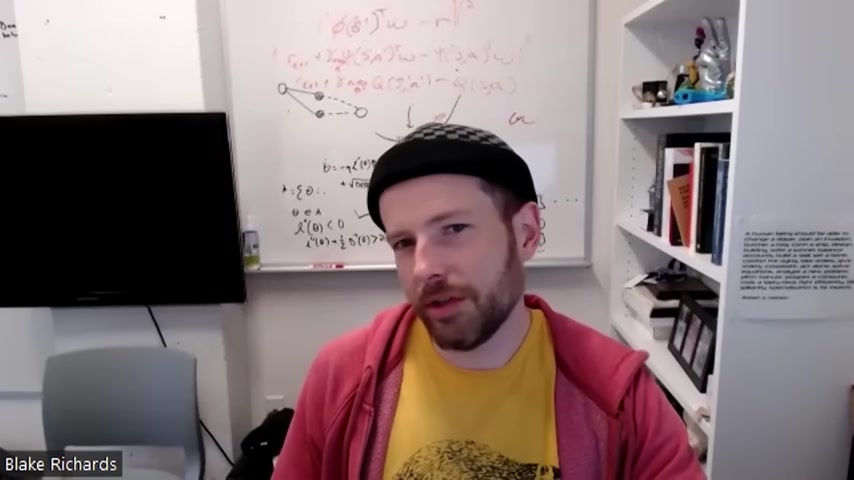
Well enough that you can cut out the middle meth , cut out the joystick instead of brain controls , hand controls , joystick controls , cursor , you just go directly to brain controls cursor .
It's not magic .
The reason neuralink works is because it's recording and decoding electrical signals from the brain .
Turning that into a useful control signal for a video game like Pong requires some good machine learning practice .
I think it just showed that that neuralink were , were progressing and that they were actually , you know , in the game .
So the oldest thing I could find , that's kind of like what neuralink is doing today goes back more than 50 years to 1969 .
That's when a researcher named Eberhard Fets connected just one of a monkey's neurons to a dial in front of its face .
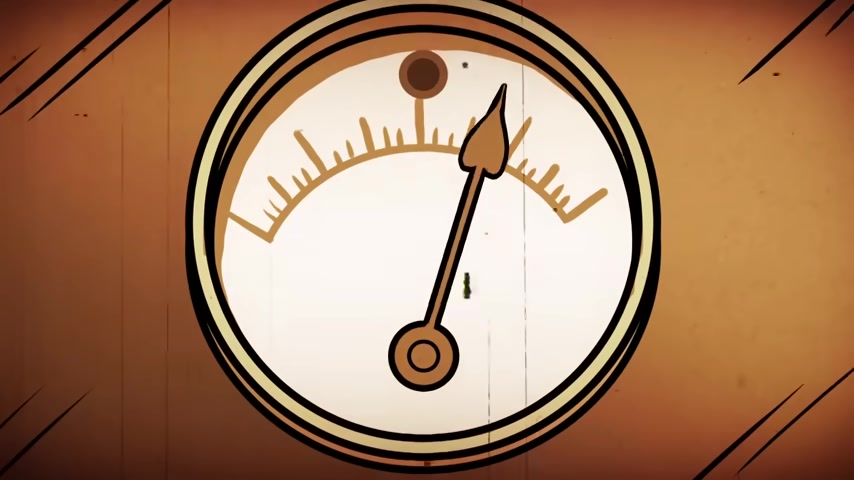
When the monkey thought in such a way that fired that particular neuron , the dial moved and you get a banana flavored pellet .
Eventually he became better and better at thinking in just the right way to get the dial to move consistently .
That's basically what neuralink is doing .
But with time the technology got better .
Here's Matthew playing a computer game .
He's not using a mouse or a joystick rather , he's thinking of where to move the paddle .
She reached out with a robotic arm .
She thought about the use of her own hand .
She picked up that thermos of coffee brought it close to her , tilted it towards herself and uh sipped coffee from a straw .
We also have cochlear implants .
We go , it's coming back on and he's back on again .
See how he turns .
Hi , Jonathan and retinal implants that literally make your brain see things .
So what sets Neuralink apart ?
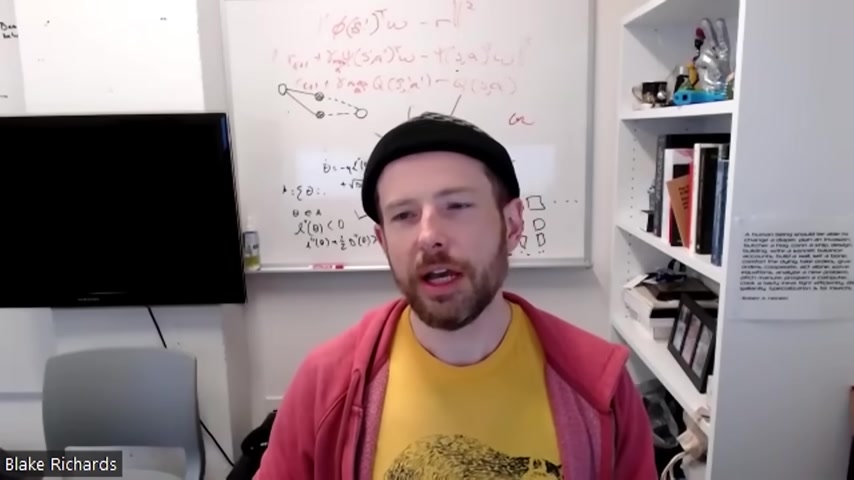
Most of what's happened at Neuralink here has been taking private sector level resources to engineer this to the degree required to actually get to the point where you could start to really see these devices be implanted in human beings .
On the regular , the ingenuity of N one if it ends up working at all is how it does so much in a very small package .
It's as much about engineering as it is about the science .
A single implant is only a little bigger than a quarter attached to it are wires thinner than a human hair and attached to those wires are over 1000 tiny electrodes , all capable of recording and triggering neural activity .
And functionally it's wireless .

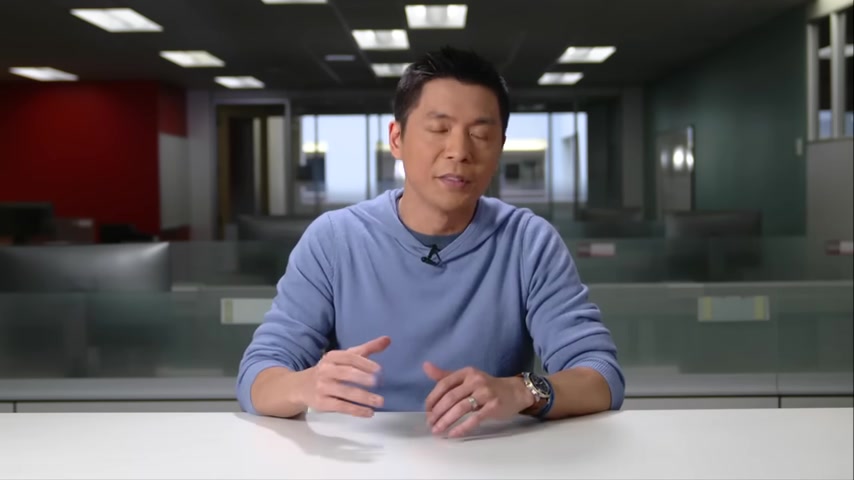
It uses bluetooth , meaning there are no exterior cables , it's invisible once it's surgically installed and it runs on a battery which you can also charge wirelessly as crazy as this all sounds .
The human clinical trials at neuralink have a very specific scope .
So first , they're mainly about safety because remember we are talking about highly invasive brain surgery here that alone requires incredible precision .
And because of the tiny scale of the implant itself , it can't be done using human hands , the threads that connect directly to the brain tissue .
There are only a few red blood cells wide .
These electrodes are so tiny and the blood vessels on the surface of the brain so numerous and so densely packed that a human physically can't do this .
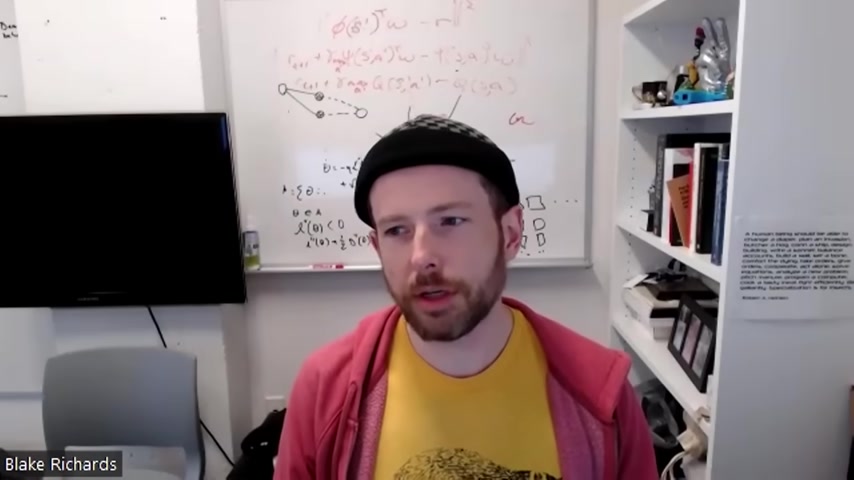
A lot of the initial work at neuralink went into very carefully building the robotic arms that would actually insert the uh recording technology into the brain .
And this is a big challenge here .
The robot is selecting individual electrode threads and placing them into the brain in the preplanned location with remarkable accuracy and repeatability .
Now , the people signing up for human trials to have this brain implant , neuralink hasn't disclosed who they are .
But in September , when the company was looking for recruits , they were specifically looking for people with quadriplegia due to cervical spinal cord injury or people with a LS , both conditions where a person can suffer total loss of muscle control .
Musk thinks he can solve this problem .
The first implementations will be to enable people who are , have lost the brain body connection .
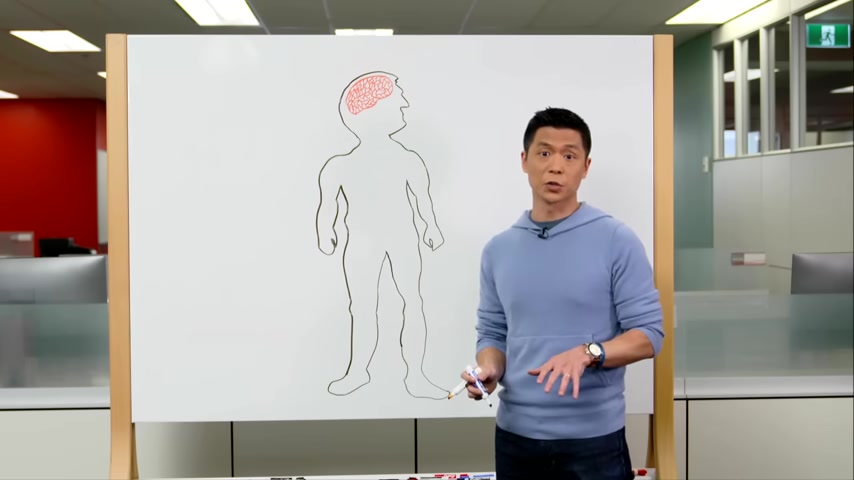
Uh to be able to operate a computer or a phone faster than someone who has hands .
That , that work .
That's the focus of this first phase of human clinical trials .
Because when someone is quadriplegic , there's nothing wrong with their brain per se .
Their neurons are firing just like everyone else's .
It's the pathway down to the limbs that's damaged .
So the signal from the brain doesn't get all the way through .
Neuralink wants to pick up those signals and rep patch the network , you can read out from the brain , the movements that a person might be intending to make and then use that readout to control their muscles in another way .
I mean , as miraculous as it may sound , uh we're confident that it is possible to restore full body functionality to someone who has a severed spinal cord .


The core of Neuralink s mission is to master the human brain such that all of your neurons can communicate seamlessly with the outside world .
Chip implants could read our thoughts and connect to a computer so we could send emails by thinking or watch youtube videos in our minds or even replay old memories version 10 Neuralink , whatever far in the future .
You could recall everything , but just like it's a movie concluding all the entire sensory experience , emotions , everything , everything , everything and play it back .
Or this could create great harm , implanting something into a living human brain is never something that should be taken lightly .
It's never going to be free at risk and quite why we want to do it is also very questionable .
I think that there is a , a moral difference between fixing problems and sort of artificial enhancements .
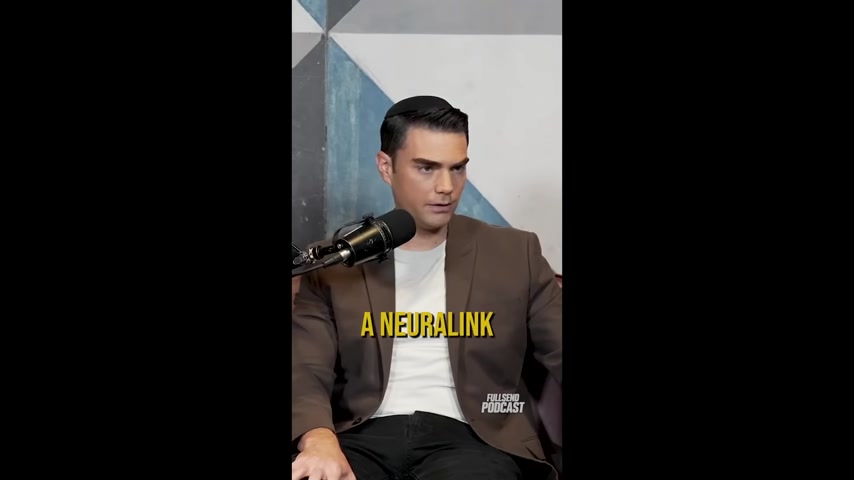
If you're talking about a neuralink to help a paralyzed person feel again , obviously good , you're talking about making a blind person .
See again , obviously good .
If you're talking about a neuralink to raise your IQ from 120 to 130 I think that you're gonna get into some pretty dice eugenic territory fairly quickly here .
If you have a Neuralink device , it's recording your brain data .
What happens with that brain data ?
I I think it's safe to say that that is some of the most intimate data that we could have about a person and it's not necessarily something you want sitting on neuralink cloud servers or whatever I should say .
Elon Musk is far from the only player in this space .
There are dozens of human clinical trials happening right now , testing all kinds of ways to bridge this brain machine divide and to hear Musk tell it we're already digitally superhuman in a way .
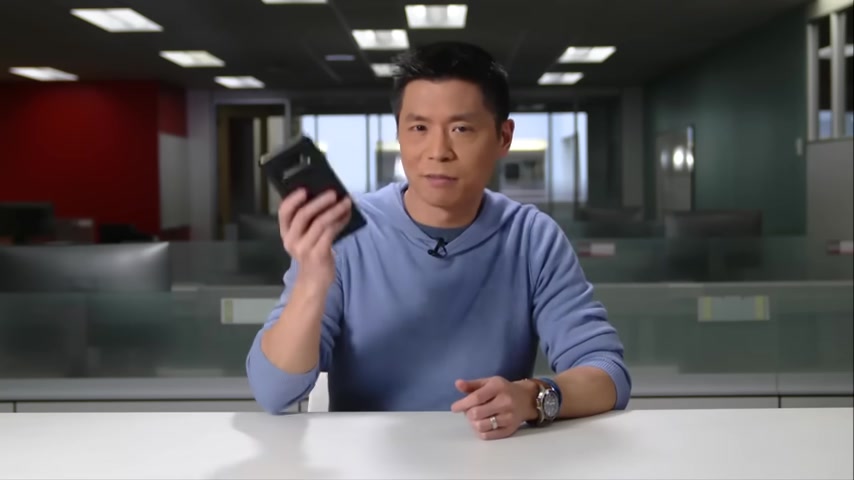
But a direct neural interface with today's technology that's the holy grail inside a Pandora's box .

Are you looking for a way to reach a wider audience and get more views on your videos?
Our innovative video to text transcribing service can help you do just that.
We provide accurate transcriptions of your videos along with visual content that will help you attract new viewers and keep them engaged. Plus, our data analytics and ad campaign tools can help you monetize your content and maximize your revenue.
Let's partner up and take your video content to the next level!
Contact us today to learn more.